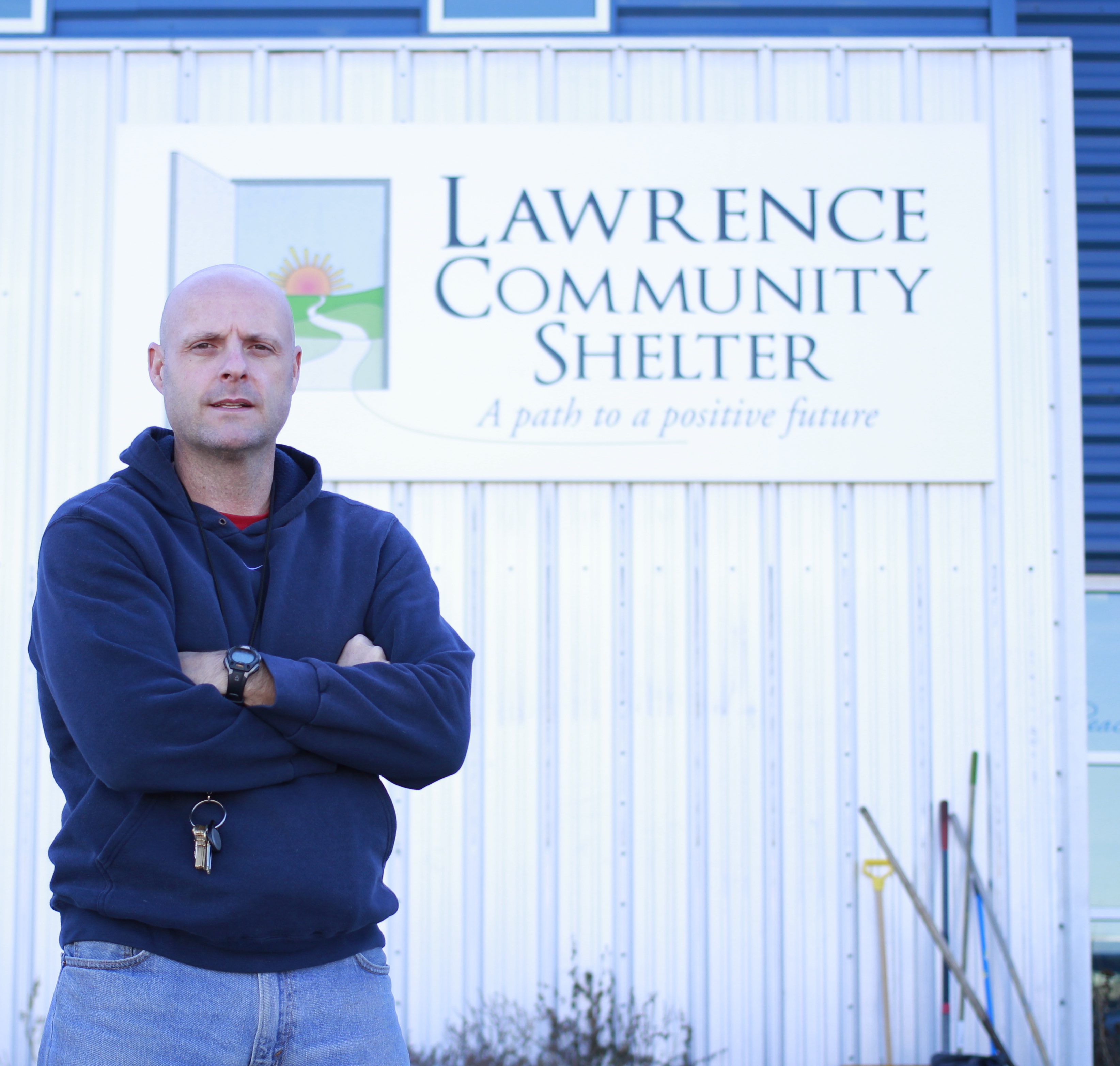New door lock system helping the Lawrence Community Shelter take a proactive approach to safety

Lawrence Community Shelter, 3655 E. 25th St.
The Lawrence Community Shelter is taking a more proactive approach to building security.
Within the next few days the shelter will begin using a newly installed electronic lock system for one section of the facility, said Trey Meyer, the shelter’s executive director.
The new system, which allows the doors to be unlocked by key fobs, will sync with the shelter’s other security measures and afford staff greater control over who can go where in the building.

Trey Meyer
With a maximum capacity of 125 guests, the shelter is broken into two sections, Meyer said. Families are assigned to one portion while single guests reside in the other.
“And everybody on the single side knows they’re not supposed to be on the family side,” he said. “The goal is to make sure people can get to where they need to be while being as safe as we possibly can be.”
In part, the two sides are separated because of safety concerns, Meyer said. Before the new lock system was installed, the entrance separating the two sides has remained unlocked. Though, staff members do patrol the area and security cameras keep watch.
And at times, security concerns do arise.
In May 2015, Jeremiah Thomas Hair, a guest of the shelter, was arrested after a 14-year-old girl living in the family side accused him of propositioning her for sex, according to an arrest affidavit filed in Douglas County District Court.
Hair approached the girl after improperly entering the family side, the affidavit says. He ultimately pleaded guilty to making a criminal threat.
And on Dec. 25, another man, 56-year-old Mark Meyer, was arrested at the shelter after he was accused of sexually touching two people in their 20s and battering a third person. The alleged incident, however, all took place on the single side of the shelter.
The new lock system could have an impact on both types of incidents, said Shine Adams, the shelter’s director of program development, who installed the locks.

Shine Adams
The new system can keep guests from entering restricted areas as well as keep out of the building altogether those who have been banned, Adams said.
For example, sex offenders are barred from entering the building, even during cold weather, Adams said. So, if someone using a key fob to access the shelter is banned for whatever reason, staff will have the ability to revoke that person’s access.
“If we don’t want somebody going somewhere we’ll have control over that,” he said.
In addition, because it connects to the building’s security cameras, the new system can help with investigations, Adams said.
“So if something was stolen and we don’t know what time it was, we’d be looking through 24 hours of footage to figure it out,” he said. “With the fobs it gives us another anchor point to understand the movement.”
Though the shelter has seen its share of recent financial problems, the new system was not “cost prohibitive,” Meyer said. This is largely because Adams, who recently became a full-time employee, was able to do the work himself.
“It came down to having just a bit of money and, frankly, a guy like Shine,” Meyer said.
Adams said he’s had past experience with this type of work and simply wanted to pitch in as a way of being more proactive with the building’s security.
“I wanted to be getting out in front of potential problems rather than responding to them,” he said. “So I just did a bunch of research and figured out how to do it.”
One commercial bid quoted the shelter as much as $6,000 to wire a door, Adams said. He was able to do the work for a third of that.
There are around six more doors in the shelter that Adams said he’d like to wire, but the money and materials could drag that process out.
“I think I can get them done for about $1,000 each, but I’m looking for in-kind or capital donations,” he said. “I’ll be able to do it one door at a time over the next year, but I’d really like to just get it done.”







